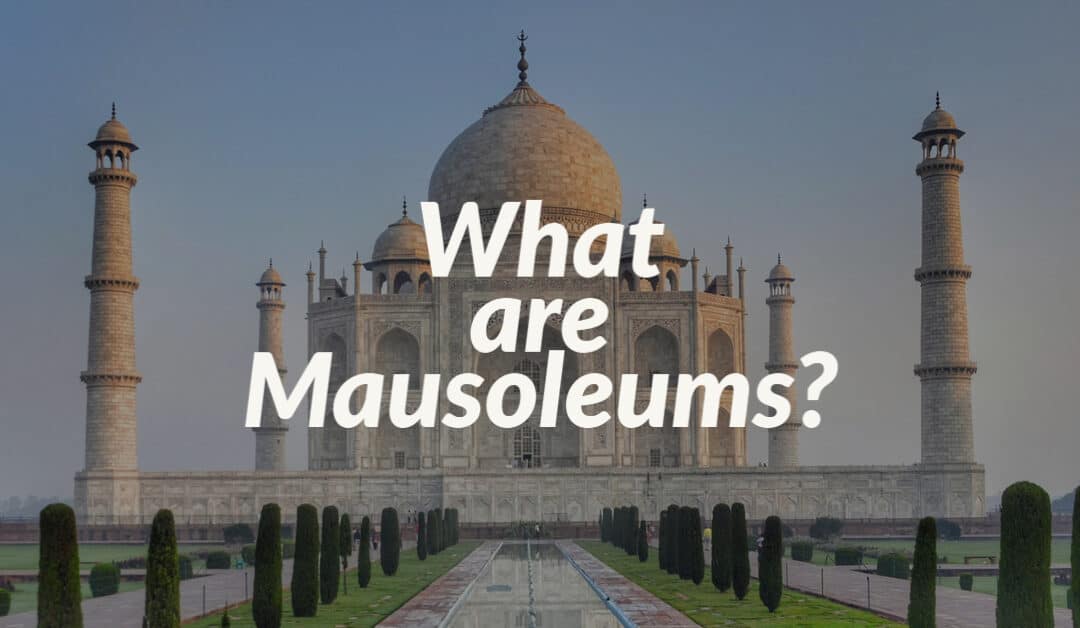If you’ve ever been to a cemetery and seen large stone buildings with spaces inside for deceased individuals, you’ve seen a mausoleum. Often, they are pretty impressive and even claim spots in lists of the wonders of the world. You can find mausoleums in cemeteries, churches, and private or public lands all across the globe. Let’s look at exactly what a mausoleum is, why someone would choose interment there, and how they work.
What is a Mausoleum?
Ancient civilizations built mausoleums as large stone monumental tombs for deceased leaders. A mausoleum encloses a burial chamber. This chamber can be above ground or within a vault below the structure.
The vaults contain the casket or coffin. You can explore the many famous ancient mausoleums online. You may see a mausoleum or a columbarium (this is a mausoleum for cremated remains contained in an urn). One of the most famous mausoleums is for King Mausolus, the Persian satrap of Caria, whose large tomb was one of the Seven Wonders of the Ancient World. (1)
Famous mausoleums include the pyramids of Egypt and Grant’s Tomb.
How Does a Mausoleum Work?
A burial vault is usually made of cement or stone and houses the coffin in a mausoleum. If you choose cremation, the ashes are placed in an urn in a columbarium niche.
Aboveground Niches:
The casket or coffin can sit inside the vault space within a mausoleum. Likewise, urns can also sit in a niche of a columbarium wall. Sometimes a cemetery may allow an urn to be placed in the same vault space as a casket in a mausoleum.
Underground Crypt:
In other arrangements, the coffin or casket sits within an underground crypt or catacomb. In a traditional burial, the coffin instead sits in a concrete vault in the ground.
Sarcophagus:
Sometimes coffins in mausoleums sit in stand-alone decorative concrete or individual stone vaults. These beautifully carved and ornate vaults are generally standalone vaults that you can visit inside of the mausoleum.
Types of Mausoleums
- Indoor Mausoleums: Contain spaces for tombs inside of a structure. Usually, you can go inside a facility and see each tomb.
- Garden Mausoleums: Often called Outdoor Mausoleums, they do not have an indoor space to visit. The sealed openings for each crypt have a nameplate.
A family can own a mausoleum at a private cemetery. A wealthy family might build their mausoleum, but it would not generally be open to the public for viewing. Many families choose to buy a personal space at a cemetery mausoleum. At an indoor mausoleum, the cemetery hours or family’s desire for privacy may limit visitors.
You can often pay for entombment at a public mausoleum. Many cemeteries offer spaces available for purchase. Most cemeteries also provide areas for urns in a columbarium if you choose cremation.
There are also mausoleums located in religious institutions or on their property.
What Religion Uses Mausoleums?
Many religions over the years approved the use of mausoleums for entombment. Whether your body is placed in the ground or placed in a stone crypt is not usually a subject of religious debate. However, the catholic church has embraced entombment more than many other Christian churches. Many of the Catholic cathedrals offer spaces in their chapel mausoleums for their faithful.
The crypt at the Cathedral of Our Lady of the Angels in Los Angeles, California, holds 6,000 urn spaces. Their mausoleum contains “some of the finest works of contemporary sacred art — stained glass, etchings, sculpture, and inscriptions. The Crypt itself is the deeply symbolic foundation of a celebrated work of sacred architecture.” In Europe, these underground vaults are also called “catacombs.”
The Muslim faith is also famous for its use of mausoleums. One notable example is the Taj Mahal, an “ivory-white marble mausoleum on the southern bank of the river Yamuna in the Indian city of Agra commissioned in 1632 by the Mughal emperor Shah Jahan to house the tomb of his favourite wife and the tomb of Shah Jahan himself. The tomb is the centrepiece of a 42-acre complex, which includes a mosque and a guest house, and is set in formal gardens bounded on three sides by a crenellated wall.” (2) It is considered one of the New Seven Wonders of the World.
You Have Choices
No matter what type of disposition you choose, it is essential to plan before your time comes. A place in a coveted mausoleum is not something that happens without working out the details beforehand. If you choose a chapel mausoleum or crypt associated with your faith, you would also need to meet with the clergy beforehand to express your interest.
We Can Help
At Renaissance Funeral Home and Crematory, we want to help you plan so that your family and loved ones understand your last wishes. Making a plan for your interment helps your family know what is next and agree about what will happen. With a well-thought-out plan, you prevent heated disagreements about how to handle your arrangements.
Families need time to come together and grieve a loss. Doing so at a remarkable monument or mausoleum can help loved ones understand that their life means something. They are part of a bigger picture: a group of loved ones that celebrate love and life and grieve loss as a loving family.


